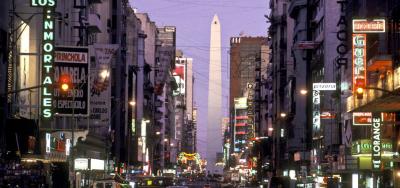Last month, the Minister of Economic Development, Environment, and Trade and Export Growth, David Parker, attended a meeting of the Mercosur Latin American trading bloc, before holding talks with Ministers of Agriculture and Livestock, and Foreign Affairs.
The significance of this event was lost in the shuffle of a frenetic business news cycle dominated by the Comprehensive and Progressive Agreement for Trans-Pacific Partnership (CPTPP) and trade wars. Not only did the trip help allay initial concern about the direction the trade agenda would take under the Labour-led government, it signals that New Zealand’s aggressive pursuit of market access is continuing in earnest. It comes at a time when New Zealand is already involved in trade negotiations with another Latin American bloc, the Pacific Alliance, consisting of Chile, Columbia, Mexico and Peru.
Establishing a foothold in Latin America is imperative considering growth in Asia will eventually taper off.
Mercosur (also known as the Common Market of the South) was formed in 1991 and the four permanent members — Argentina, Brazil, Paraguay and Uruguay — were the original signatories. Bolivia is set to join, while Venezuela is currently suspended. The bloc’s combined Gross Domestic Product exceeds NZD$4 trillion, making it larger than the Pacific Alliance. (Together, Mercosur and the Pacific Alliance represent more than 90 percent of GDP in the region.)
Notwithstanding the ‘growing pains’ endemic to most emerging markets, Mercosur is relatively stable and lucrative. For instance, government deficits are within single digits of GDP, suggesting these countries are ‘living within their means’.
Argentina’s economy, which had shrunk by two percent per annum in recent years, should expand at three percent over the next five years. The International Monetary Fund forecasts Brazil’s economy to grow at a slower pace of just over one percent, a projection Brazil’s Finance Minister, Henrique Meirelles, questioned as too conservative in an interview at the World Economic Forum. He anticipates growth of at least three percent. Meanwhile, Paraguay and Uruguay should tick along at three-four percent per annum.
Brazil ($259 million in imports from New Zealand; $450 million in two-way trade) and Argentina ($140 million in imports; $380 million in two-way trade) account for most of the trade between Mercosur and New Zealand. Trade with the Pacific Alliance is larger (for example, Mexico —$400 million in imports; $742 million in two-way trade; Chile — $146 million in imports; $369 million in two-way trade).
Yet this pales in comparison with the value of trade between New Zealand and Asian economies (for example, Malaysia — $1.3 billion in imports from New Zealand; $3.1 billion in two-way trade; Indonesia — $1.1 billion in imports; $2.0 billion in two-way trade).
Some see this as anecdotal evidence that free-trade agreements make a difference, while others credit New Zealand exporters’ increased prowess in serving Asian markets.
Because they are predominantly agro-based, economies in Latin America do not have a voracious appetite for New Zealand’s food and beverages. Opportunities will most likely arise from the tech and service industries that support agro-based economies. Compac (fruit sorting technology) and Wellington Refrigeration and Control Solutions (thermostats) are examples of ‘under the radar’ New Zealand companies making inroads in Latin America.
The world is taking notice. Over the past six months, the European Union and Canada have sought to cement closer trading ties with Mercosur. While New Zealand is not close to sealing trade deals with Mercosur, the ongoing interest in Latin America holds her in good stead.
Diplomatic ties between New Zealand and Latin America continue to strengthen, as epitomised by the recent opening of an embassy in Colombia. The Latin America New Zealand Business Council and Latin America Centre of Asia Pacific Excellence (the latter led by Victoria University of Wellington) facilitate stronger economic and cultural engagement using multiple touch points such as trade missions, events, research projects, scholarships and tours. An increase in the number of flights to Latin America should make travel easier.
These initiatives foster cultural exchanges and create familiarity regarding doing business in Latin America, positioning New Zealand companies for future success.
{ A Newsroom release || April 26, 2018 |||
Run your news here on MSCNewsWire to link back to your site





